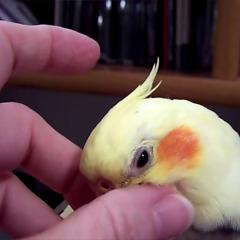But shpa children dose. No-shpa: permissible dosage of antispasmodic for children of different ages
Almost every person is familiar with a drug such as No-shpa. He is an antispasmodic who has taken root in home first-aid kits and has become a faithful savior from pain of a different nature. But is it possible to give this drug to a child, parents doubt, because the instruction clearly prescribes that No-Shpoi should be treated by persons over 6 years old.
Indications for use No-shpy

Antispasmodic released in the form of tablets and capsules. The main indications for the use of pills yellow color are:
- headaches;
- abdominal pains of a spastic nature associated with constipation and ulcers, cystitis, cholecystitis, urolithiasis and duodenal pathologies;
- dry cough with bronchitis and laryngitis (to prevent spasm of the upper respiratory tract).
The instruction prescribes giving No-Shpu to children at a temperature. But not every time babies should take pills. If the temperature rises to the highest marks, but the skin remains moist and pink, no antispasmodic is needed.
If the baby is shaken by a strong chill, and his skin looks pale and dry, it speaks of a “white fever”. Knowing exactly that the child tolerates Drotaverinum normally, for the expansion of blood vessels and the adjustment of thermoregulation, the mother can give a drink to the child No-shpa.
But shpa babies: is it worth the risk?

In the first months of life, babies are plagued by colic in the stomach, increased gas formation and fermentation processes in the intestine. The culprits of discomfort are imperfect gastrointestinal tract and enzyme system, which do not allow food masses to be fully digested and absorbed. Spasm of the intestine in infants causes abdominal pain, profuse belching and regurgitation.
To improve the health of the restless crumbs, doctors recommend the use of teas, venting tubes and other means. But if the air bubbles continue to burst the tummy, the newborn is prescribed No-silo. Since the pills increase the load on the heart, they are not given whole.
The recommended dosage for children under the age of one year is equal to the fourth or eighth part of the disintegrated tablet. A piece of antispasmodic crumbs give only 1 time per day, pereterev into powder and diluted with some water.
From 2 - 3 years a single dosage of No-shpy for the treatment of children varies. Up to the age of 6, the instruction sheet proposes to divide from 2 to 3 doses from 40 to 200 mg of the drug throughout the day. For children older than 6 years, the dosage is slightly increased. These are 80 - 200 mg divided into 2 - 5 receptions.
No-shpa for teens
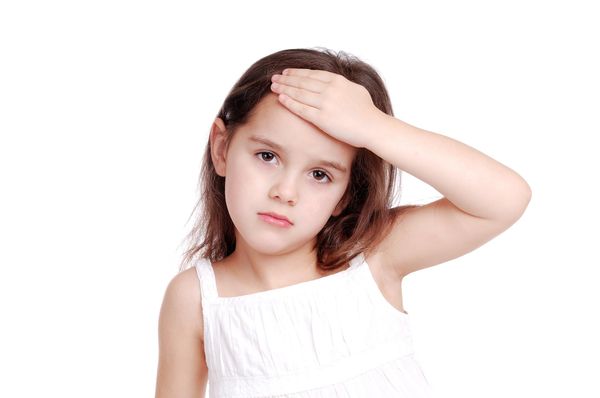
After 12 years of age, No-shpu for children is prescribed in quantities close to adult doses. The daily rate of antispasmodic for an adult varies between 3 and 6 tablets, which corresponds to 120 - 240 mg. But for a continuing organism, this is a lot, and the assignment is distributed throughout the day, so that the maximum amount of the drug does not exceed 80 mg (2 tab.).
If the pain is moderate and they can be tolerated, they give No-shpu 3 p. per day 1 tablet. If the discomfort is strong enough or the remedy did not help, in consultation with the doctor, a one-time treatment is adjusted to 2 tablets.
Contraindications to the use of shpy
Despite the high abilities of No-shpy to remove spasms, it can cause harm to small patients if they suffer:
- bronchial asthma;
- angle-closure glaucoma;
- intolerance to lactose or galactose;
- low blood pressure;
- atherosclerosis of the coronary arteries;
- individual intolerance to drotaverine;
- severe cardiac, renal or hepatic insufficiency.
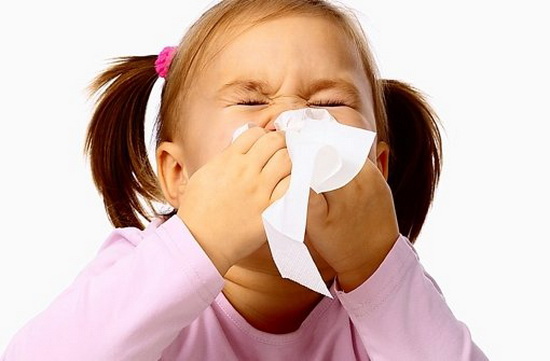
Dr. Komarovsky is concerned that there are online advice for mothers on the treatment of infants with intramuscular injections of No-shpy. Without the knowledge of the physician, it is prohibited to inject the drug to the baby. Do not aggravate the situation and do not risk the health of the child.
Possible side effects
Improper medication, violation of contraindications or failure to comply with dosages threatens the baby with not the most pleasant side effects. By their appearance, the body announces the failure of self-treatment No-spa. So, from the side of digestion, negative reactions are manifested by nausea, vomiting, and constipation.
The nervous system shows its dissatisfaction with the arrival of Drotaverine with vertigo or increased headache, insomnia or anxious sleep. Problems of the cardiovascular system due to the admission of antispasmodics are rarely observed. They are manifested by lethargy, palpitations, lack of initiative of the child.
Allergic effects are also rare, but do not forget about them. Sneezing, lacrimation, and a rash on the body - all this speaks of intolerance to the drug. From the use of No-shpy should be abandoned.
What analogues replace No-shpu

If, for any reason, No-mash cannot be used to treat a particular child, the drug is replaced by analogues. The cheapest medicines are Russian, which recipes are based on drotaverine or papaverine. These are:
- Nosh-Bra;
- Spasmol;
- Papaverine;
- Spazmonet;
- Drotaverine Forte;
- Drotaverine hydrochloride.
Of the foreign analogues patients offer Spazarin or a strong drug No-spalgin. The second drug consists of drotaverine, paracetamol and codeine. You can buy it only with a doctor’s prescription.
DOSAGE FORM, COMPOSITION AND PACKAGING
Tablets are round, biconvex, yellow with a greenish or orange shade of color, labeled "spa" on one side.
1 tab.
Drotaverine Hydrochloride 40 mg
Excipients: magnesium stearate, talc, polyvidone, corn starch, lactose monohydrate.
10 pieces. - blisters (2) - packs cardboard.
60 pcs. - polypropylene bottles with a push-top dispenser (1) - cardboard packs.
100 pieces. - polypropylene bottles (1) - cardboard packs.
PHARMACHOLOGIC EFFECT
Antispasmodic. Drotaverine is an isoquinoline derivative that exhibits a spasmolytic effect on smooth muscle by inhibiting the enzyme phosphodiesterase 4 (PDE 4). Inhibition of the PDE 4 enzyme leads to an increased concentration of cAMP, which inactivates the myosin kinase light chain (MLCK), which, in turn, leads to the relaxation of smooth muscles.
Drotaverin inhibits the PDE 4 enzyme in vitro without inhibiting the PDE 3 and PDE 5 isoenzymes. Apparently, PDE IV is functionally very important for reducing the contractility of smooth muscles, therefore selective PDE 4 inhibitors can be effective in the treatment of hyperkinetic diseases and diseases associated with spastic conditions of the gastrointestinal tract .
The enzyme hydrolyzing cAMP in the smooth muscle cells of the myocardium and blood vessels is mainly an isoenzyme of PDE 3, which explains the high efficacy of drotaverine as a spasmolytic in the absence of a pronounced effect on the cardiovascular system and serious cardiovascular adverse events. The drug is effective in spasms of smooth muscles of both nervous and muscular etiology. Regardless of the type of vegetative innervation, drotaverine acts on the smooth muscles of the gastrointestinal tract, biliary tract, as well as the urinary and vascular systems. Thanks to the vasodilating action, No-shpa improves the blood supply to the tissues.
PHARMACOKINETICS
Suction and distribution
When taken orally and parenterally, drotaverine is rapidly and completely absorbed. Cmax is reached within 45-60 minutes. It binds to plasma proteins (alpha albumin and alpha and beta globulins).
Metabolism and excretion
Metabolized in the liver. T1 / 2 - 16-22 hours. After 72 hours, drotaverin is eliminated from the body mainly as metabolites, 50% with urine, 30% with feces.
INDICATIONS
Spasms of smooth muscles associated with diseases of the biliary tract: cholelithiasis, cholecystitis, pericholecystitis, cholangitis, papillitis;
Spasms of smooth muscles of the urinary system: urolithiasis, pyelitis, cystitis, tenesmus of the bladder;
At physiological labor, shortening of the cervical dilatation phase and thereby reducing the total duration of labor (for the solution for IV and IM injection);
As an adjuvant therapy:
When spasms of the smooth muscles of the digestive tract: gastric ulcer and duodenal ulcer, gastritis, cardia and pylorus spasms, enteritis, colitis, accompanied by constipation and flatulence;
Tension headaches (for ingestion);
With gynecological diseases (dysmenorrhea);
Strong labor pains (for solution for IV and IM administration);
When used as an adjuvant, the drug is administered parenterally when it is impossible to use tablets.
DOSING MODE
For adults, the recommended daily intake is 120–240 mg (in 2–3 doses); children set the dose of the drug, depending on age, for children aged 1 to 6 years - 40-120 mg (2-3 doses); over the age of 6 years - 80–200 mg (in 2–5 doses).
The average daily dose for intramuscular administration in adults is 40-240 mg (divided into 1-3 injections / day). In acute colic (renal or biliary) the drug is administered intravenously in a dose of 40-80 mg.
To shorten the phase of cervical dilatation during physiological labor, 40 mg intramuscularly is administered to the patient, which, with an unsatisfactory effect, can be repeated 1 time for 2 hours.
SIDE EFFECT
On the part of the digestive system: rarely - nausea, constipation.
From the side of the central nervous system: rarely - headache, dizziness, insomnia.
Since the cardiovascular system: rarely - rapid heartbeat; very rarely - arterial hypotension.
Other: very rarely - allergic reactions (with parenteral administration, especially in patients with hypersensitivity to bisulfite).
CONTRAINDICATIONS
Severe renal or hepatic impairment;
Severe heart failure (low cardiac output syndrome);
Children's age up to 1 year (for tablets);
Hypersensitivity to drotaverin or to any excipient of the drug (especially sodium metabisulphite - for solution for IV and IM injection).
With caution, use the drug for arterial hypotension. When a / in the introduction of the drug the patient should be in the prone position because of the danger of collapse.
PREGNANCY AND LACTATION
Drotaverin does not possess teratogenic and embryotoxic action. However, the use of the drug is recommended only after a careful weighing of the ratio of the expected benefits and possible risks.
Due to the lack of necessary clinical data, it is not recommended to administer Drotaverinum during lactation (breastfeeding).
SPECIAL INSTRUCTIONS
The tablets contain 52 mg of lactose, therefore it is not prescribed to patients with lactase deficiency, galactosemia or glucose / galactose absorption disorder.
The composition of the solution for in / in and in / m the introduction includes sodium bisulfite, which can cause allergic reactions, including anaphylactic and bronchospasm, in sensitive individuals (especially in individuals with bronchial asthma or allergic reactions in history). In case of hypersensitivity to sodium metabisulfite, parenteral administration of the drug should be avoided.
Influence on ability to drive motor transport and control mechanisms
When ingested in therapeutic doses, drotaverine does not affect the ability to engage in potentially hazardous activities.
After parenteral (especially in / in) administration of the drug, it is recommended to refrain from driving vehicles and operating machinery for 1 hour (after use).
OVERDOSE
To date, no cases of drug overdose No-shpa were reported.
DRUG INTERACTION
With simultaneous use of No-Spa can reduce the antiparkinsonian effect of levodopa.
CONDITIONS FOR VACATION FROM DRUGSTORES
The drug in the form of a solution for IV and IM injection is released by prescription.
The drug in the form of tablets approved for use as a means of non-prescription.
TERMS AND CONDITIONS
Tablets in blisters should be stored at a temperature not exceeding 30 ° C.
Tablets in a polypropylene vial and solution for IV and IM injection should be stored in a dark, out of reach of children at a temperature of 15 ° to 25 ° C. Shelf life - 5 years.
The price of No-Spa: 180-300 rubles.
In the industry of pharmaceutical companies changes occur every day - more and more new medicines are invented. However, there are drugs that have passed the test of time and have proven their effectiveness, thereby deserving their honorable place in the medicine cabinet of many people. One of these drugs is No-shpa. If No-shpa is in your first-aid kit, but you don’t know if you can take this drug to babies, then this information is for you.
Act
The main active ingredient of No-shpy is drotaverin. This substance has antispasmodic properties - relaxes smooth muscles from the structure of blood vessels, intestines, stomach, urinary organs. Due to the action of the drug, the blood circulation function is normalized, the tissues are better supplied with oxygen, and the pain becomes less tangible or completely retreats. The effect of the drug when administered intravenously begins after five minutes, with intramuscular injection - after half an hour, and with internal administration - after an hour.
Indications
No-silo should be used for headaches, gastritis, antispasmodic pains associated with constipation, with gastric ulcer, duodenal ulcer, with urolithiasis, with cystitis, cholecystitis. It should be emphasized that No-shpu is recommended for children with a dry cough to prevent a spasm of the upper respiratory tract, for example, in the treatment of bronchitis or laryngitis.
In addition, No-shpu is used as a febrifuge. But do not use No-shpu every time a child's body temperature rises. For example, if the temperature of a child is above 38 degrees, but the skin remains pink and moist, then you should not use spasmolytic agents. The drug should be taken with "white fever", that is, when your baby has a strong chill, and the skin is dry and pale. No-shpa with "white fever" dilates blood vessels, and also normalizes the thermoregulation of the child's body.
No-shpa children: contraindications and dosage
![]()
But-shpa is contraindicated to take children up to one year. But sometimes a woman who is breastfeeding can take No-shpu for intestinal colic, even considering that the drug is contraindicated in nursing children. No-shpa gets into breast milk in a minimum amount, but at the same time sufficient for an antispasmodic effect in the baby’s body. Children over the age of one year are prescribed by the doctor, who also sets the dosage, depending on the diagnosis and the condition of the baby. The dosage of No-shpy, depending on age, basically looks like this:
- children aged from one to six take from 40 mg to 200 mg of the drug, dividing this dosage into 2-3 doses;
- children, from the age of six years, take from 80 mg to 200 mg of the drug, sharing this dosage up to five doses.
Before giving the drug to the baby, it is necessary to ensure that there is no allergy to drotaverine or any other component of the drug. Therefore, you should always get acquainted with the instructions for use and the composition of the drug. In addition, No-shpa is contraindicated in children with pathologies that are not characteristic of childhood, for example, in cardiac or renal failure, with extensive atherosclerosis.
Side effects
As a result of the research it was found that this drug is well tolerated and has a minimal amount of side effects, while no overdose cases have been identified. However, in any case, when taking medication you need to be attentive to the state and well-being of the child. If dizziness, vomiting, nausea, headache, constipation, increased heart rate, insomnia develops after taking No-shps in a baby, you should consult with your doctor in order to change the dose of the drug or prescribe an alternative remedy.
No-shpa is a drug that has been known to each of us since childhood. We are all familiar with its effective effect on pain. However, not everyone knows that No-shpa does not belong to painkillers at all, but is a representative of a group of antispasmodic drugs. Therefore, before using this drug, you must make sure that the pain syndrome is caused by a spasm of smooth muscles of internal organs. Especially important is the correct use of No-shpy for the treatment of children, because this drug is not at all innocuous, as many of us represent it: its active substance - drotaverin - has a synthetic origin. And what kind of mother is ready to treat her child at random with chemistry?
Is No-shpa allowed for children?
No-shpa - widely known and very effective antispasmodic
According to official instructions to the drug, No-shpa in the form of tablets can be used to treat children over the age of six. However, medical practice allows the appointment of this drug since the age of one. The use of the drug in infants may give additional stress to the work of the heart. But in exceptional cases, when, for objective reasons, treatment with approved drugs is not possible, it is allowed to take the drug to relieve pain in colic in infants.
The use of No-shpy in children under one year can occur in one of the following ways:
- directly taking the drug baby;
- taking No-shpy nursing mom, through breast milk which the active substance in a small dosage enters the body of the child.
But shpa in the form of a solution for intramuscular or intravenous administration, according to its instructions, should not be used in childhood.
For children older than one year, the drug is used in the following states:
- Sudden cramps in the stomach, intestines, pain in gastritis, colitis, enteritis.
- Spasms of smooth muscles of the urinary system (pain in cystitis, nephrolithiasis).
- Severe headaches.
- Constipation.
- State of "white fever", chills, high fever.
- Spasm of the peripheral arteries.
A controversial indication for the use of Shpy are respiratory tract spasms and their prevention. The instructions do not call such conditions as amenable to the effective effects of this drug - drotaverin is not able to affect the muscles of the respiratory system. However, in practice, there are often cases of drug administration in such situations.
The action of drugs No-shpa
Drug No-shpa can be found on the shelves of pharmacies in the following forms of release:
- Pills.
- Capsules
- Ampoules with solution for injection.
The most common type of release for home use is the pill form of No-shpy. The drug in the form of ampoules with a solution is prohibited to use at the age of a patient under 18 years of age.In practice, in the form of injections, the drug is used only under the supervision of a physician, and it also sets the dose and duration of the course.
Among young mothers, there is a widespread opinion about the acceptability of the use of the No-shpy solution intended for injections as a means for ingestion by nursing babies. However, the use of this treatment option should be sure to consult with a pediatrician.

No-shpa is made in the form of tablets, capsules and solution for intramuscular or intravenous administration.
The active active ingredient of No-shpy - drotaverin - is characterized by a pronounced antispasmodic effect on smooth muscles of internal organs. The substance promotes muscle relaxation, dilation of blood vessels, decrease in motor activity of muscle tissue. At the same time, Drotaverinum most effectively affects the muscle tissue of the following systems of the human body:
- Digestive tract.
- Genitourinary system.
- The system of biliary organs.
- System of blood vessels.
The effect of the drug is to normalize blood circulation, stimulate the supply of oxygen to tissues, the disappearance of pain.
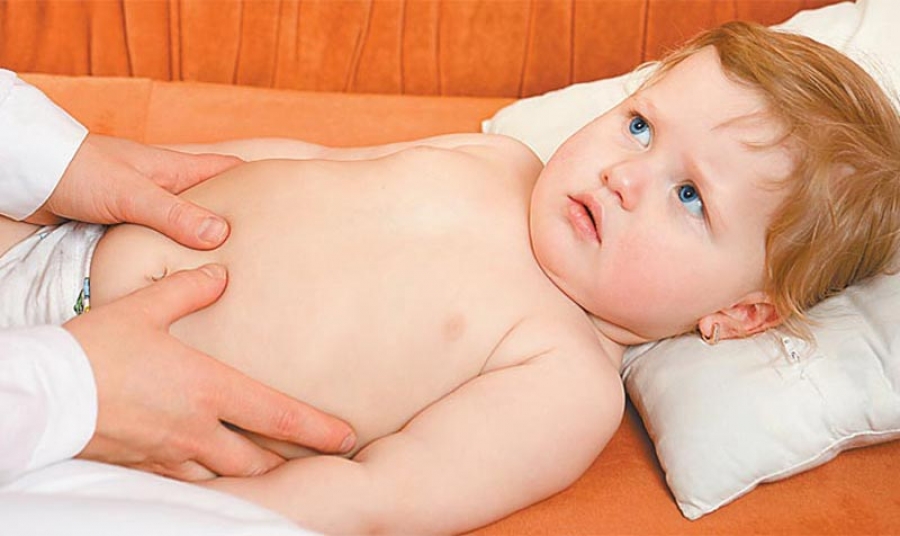
Drotaverine has a relaxing effect on muscle tissue and vascular walls.
You can observe positive changes as a result of No-shpy:
- one hour after ingestion;
- after 30 minutes - if the solution is injected intramuscularly;
- after 5 minutes - in the case of intravenous injection.
No-shpa greatly exceeds the effectiveness of the positive effects and the duration of the effect of many drugs of its group (for example, Papaverine). In addition, among its advantages should be called the minimal risk of negative effects on the central and peripheral nervous systems.
How often and for how long can the drug be used to relieve pain?
The duration of the course of the reception of No-shpy without a doctor's prescription can be no more than two days.If, as a result of this treatment, the improvement has not occurred, you should immediately consult a doctor - he, if required, will individually determine the time and dosage of the intake.
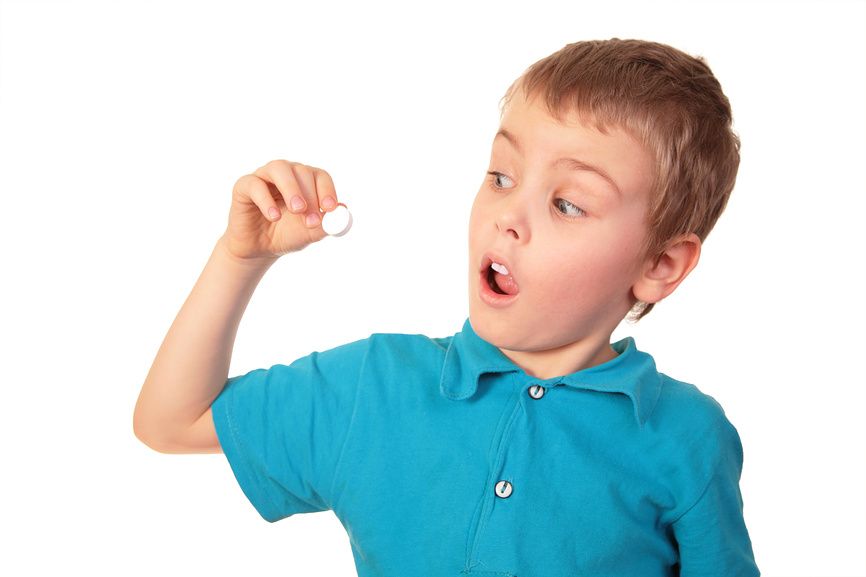
Table: scheme of reception No-shpy for several children's age groups (from 1 year)
Contraindications and possible side effects
Before using No-shpy for children, it is especially important to analyze the likelihood of unforeseen consequences. One of the factors for their appearance can be conditions and diseases, in the presence of which the use of the drug is prohibited. So, contraindications to the treatment of But-Shpoy are:
- individual intolerance (allergies);
- heart, kidney, liver failure;
- hypotension (low blood pressure);
- acute appendicitis, peritonitis, pancreatitis, intestinal obstruction;
- impaired absorption of galactose or lactose;
- angle-closure glaucoma (acute or chronic eye disease characterized by paroxysmal elevation of intraocular pressure);
- bronchial asthma;
Among the possible side effects of the drug instruction to him calls:
- violations of the digestive tract: nausea, vomiting, constipation;
- disorders of the central nervous system: dizziness, headache, restless and intermittent sleep, insomnia;
- tachycardia, lowering blood pressure;
- allergic reactions: rash, tearing, sneezing.
What can replace the drug No-shpa children?
In cases where the use of No-shpy for the treatment of a child is impossible for any reason, you can choose another drug that has an antispasmodic effect.
Table: analogues shpy
| Title | Active substance | Act | Release form | Contraindications | At what age is it possible to use the drug |
| Antispasmodic |
|
|
With 3 years. | ||
| Spazmol, Spakovin, Spazmonet | Antispasmodic | Pills |
|
From 1 year. | |
| Antispasmodic |
|
|
From 6 months. | ||
|
|
Pills |
|
From 1 year. | |
| Bendazole |
|
For use in childhood - pills. |
|
The drug is approved for use in children under 1 year. | |
| Fennel Fruit Extract |
|
Water soluble granules |
|
Since two weeks. |
Photo gallery: drugs that can be used to treat children
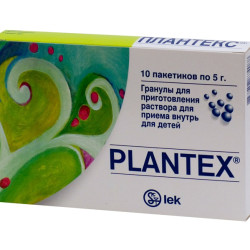 Plantex is a herbal medicine most often used for newborn babies with colic.
Plantex is a herbal medicine most often used for newborn babies with colic. 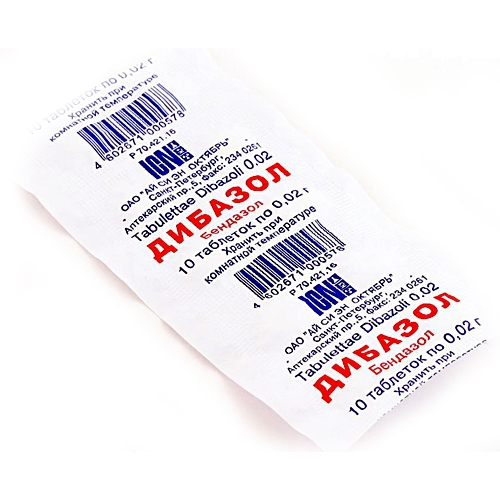 Dibazol - one of the few antispasmodics permitted for admission by infants
Dibazol - one of the few antispasmodics permitted for admission by infants  Papazol - an effective combination drug
Papazol - an effective combination drug  Papaverin is available in the form of rectal suppositories.
Papaverin is available in the form of rectal suppositories.  A cheap substitute for No-shpy - Drotaverin - has pronounced antispasmodic properties
A cheap substitute for No-shpy - Drotaverin - has pronounced antispasmodic properties 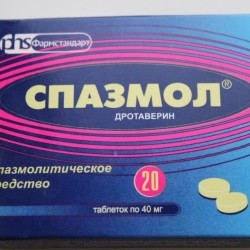 The active ingredient of the preparations Spasmol, Spakovin, Spazmonet is also Drotaverinum.
The active ingredient of the preparations Spasmol, Spakovin, Spazmonet is also Drotaverinum.
